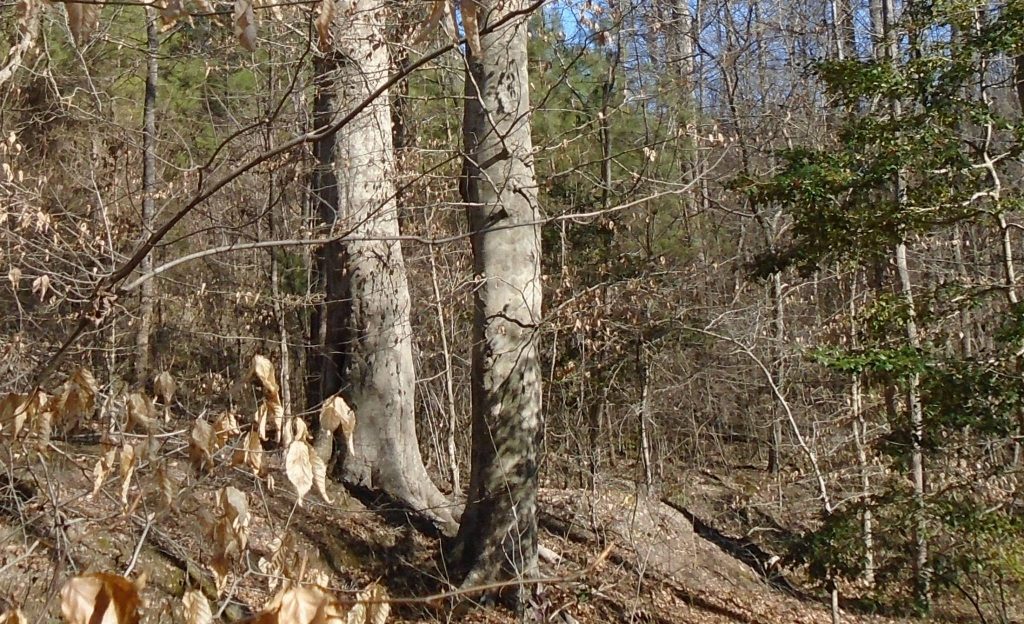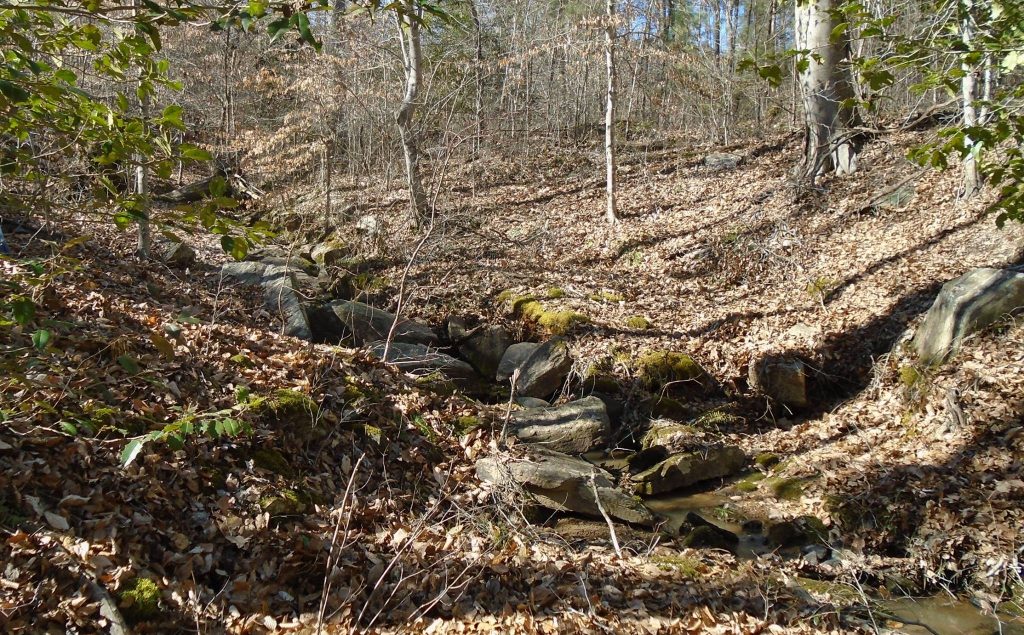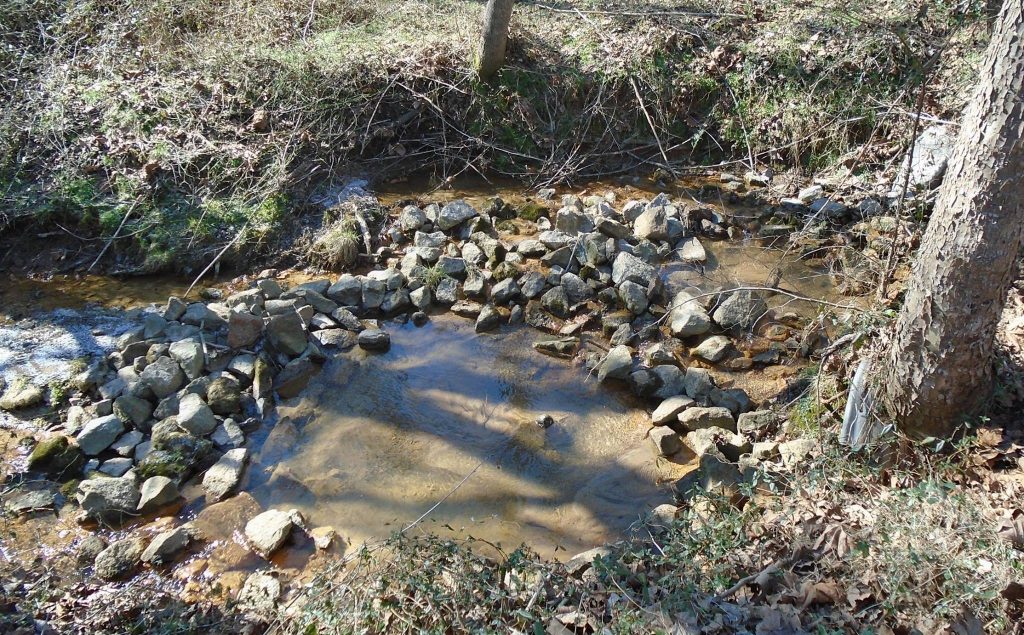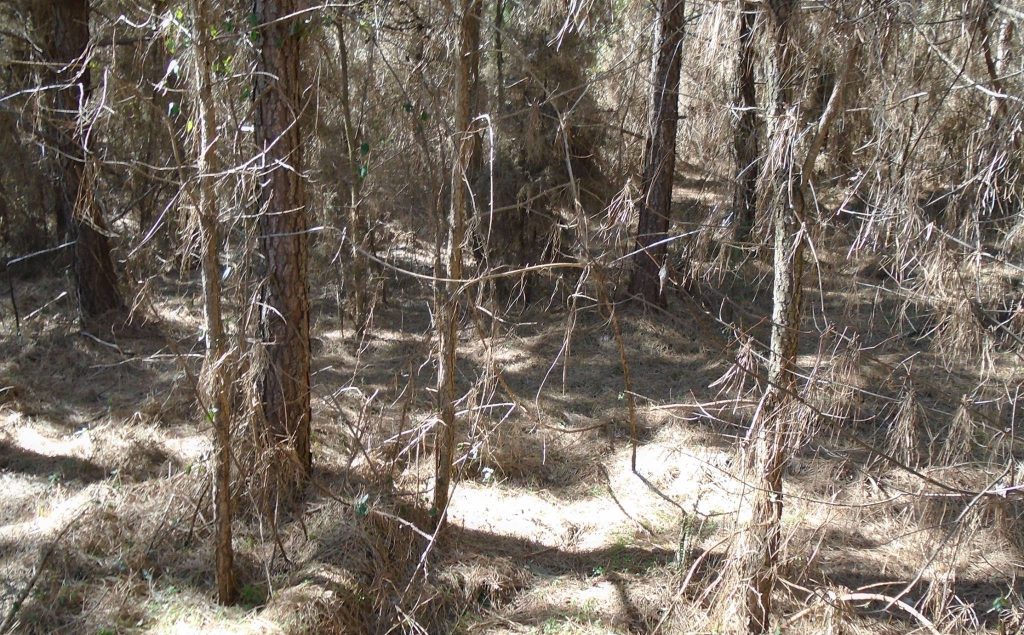
My last set of February 2016 forestry notes. These are from one of the stream management zones. We do not cut timber in the stream management zones in order to protect the waters of the Commonwealth. And they are just pleasant places to be. I like the big beech trees and they like it in the ravines near the streams.

(BTW – “My” water flows from springs to Genito Creek. From there is goes into the Meherrin River and then into the Chowan River in North Carolina, which flows into Albemarle Sound and eventually washes up near Kitty Hawk, where the Wright Brothers flew. So it is important to keep it clean.) Beech trees have an interesting ecology. They can grow in deep shade and they like the moist soils. The loblolly are the pioneer tree that comes first; they won’t grow in the shade. The beech trees are the established tree that comes last; they won’t grow in the sun. The understory in Virginia has lots of holly. It is the only green leaves this time of year. I suppose that is why they are used in Christmas decorations.

When you see big beech, you know that the place has not been disturbed very much for at least fifty years and usually more. Beech have thin bark and usually will not survive a hot fire. If you look closely at the two trees in the first photo, you will see mostly healed over fire scars on one side. A fire got to the edge of the moist area maybe forty years ago and burned some of the bark before going out. It was not a hot fire and the trees survived that one.

The next photo shows some of the root system. Beech dominate about five acres with some red maples and red and white oaks. Farther down the hill, the beech give way to yellow poplars and sycamore. Up the hill features smaller rockier streams. In the flatter places you get more sun an sycamore.

My penultimate picture show my attempt a water management. I built a little pool with rocks. But water has a way of not working according to plan. It seems to be going its own way, unvexed by my plans for it. The tree in the foreground is a sycamore.
My last picture is the canopy close. The trees have been in the ground for twelve growing seasons and now are thick enough to shade out competition. Some of the less successful trees are already dead or dying. We will thin them in 2018.
